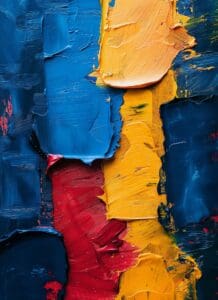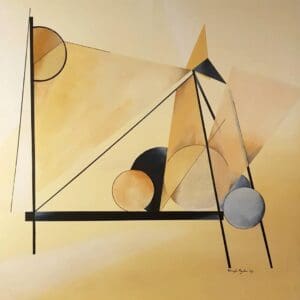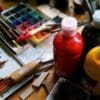Before we start on our tutorial in how to make a cubism effect in photoshop, let us have a review in our Art History.
Cubism is the most influential, essential, Innovative form of art in the 20th century. It is a complete denial of conventional outset of beauty. It is a joint creation of two greatest painters Pablo Picasso and Georges Braque.
Cubism is the new manner of seeing things in art. Most of the subject is represented in Geometrical shapes and sometimes showing numerous perspectives of a particular image. It is like the subject is being constructed from many pictures taken from different angles.
Now let’s start our tutorial. You need your Photoshop and the picture you’re going to use.
- Open your Photoshop then click on File, select Open and pick the image that you’re going to use.
- First go to Marquee tool located at the left tool menu.
- You are going to use the marquee tool to select a part of the image and then hit Ctrl + J to copy it into its own layer.
- Go to layer window then click on the Add a layer style icon
- Then select inner glow
- To provide the layer a different angle, just go to Edit then click on Free Transform.
- Hold down Ctrl key then drag any bounding box handles if you want to twist the layer. On the other hand, you can drag the cursor outside or rotate it to change the angles.
- After that, go to the layer window then select the original image layer and repeat the above mentioned steps. You can also add shapes and text if you want to.
- To add text, go to Text Tool and play with the type face.
- To add shapes, go to custom shapes tool and select a shape then drag it over the image.
The text tool and custom shapes tool are located at the left tool menu. If you want to be more creative, you can play with the opacity of each layer. You can also try out the patter overlay to gain texture.
- Just choose any layer then double click and select pattern overlay.
- Experiment with every mode not just pattern overlay to make it look good.
You can adjust the color of each layer to make it more creative. Just go to Image then click adjustment then select hue/ saturation. With that, check Colorize then you can alter the color by adjusting the slider. You can add more than one adjustment layer.
Finally, you have your cubist image from an ordinary image. You can print and put it in a nice frame. In that way, you have your abstract painting without spending much.
Source by John L Allen
Disclaimer: The views and opinions expressed in this article are those of the authors and do not necessarily reflect the official policy or position of Irish Artmart.





